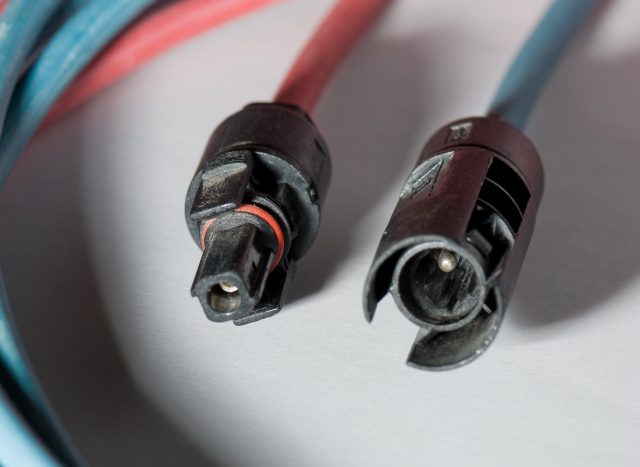Solar panel connectors
Solar panels and solar panel connectors both play a vital role in the country’s development. By the smoothness in the wires of the solar panel provides a link in the system of solar panels; by the help of this, the solar panel’s speed increases and gives the simplification in the system. This allows the current to run smoothly in the solar panel, and the charges flow in the solar charge controller, then it comes to the stage of inverting, and then it gives the current in-home from where you have connections.
Responsibility of solar panel
When a solar installer wants to expand the system’s size, they can utilize these connections to reorganize the modules, arranging them in parallel or series to get the desired array. Using a suitable solar connector to connect photoelectric (PV) modules to other components is crucial, especially when using a combiner box for larger systems.
Components
Here, we’ll go over the fundamentals of solar connections, including the many different solar connectors, their differences, and other vital details to be aware of.
Different types of solar panel connectors
Some types of solar connectors are as given below:
- Radox
- MC3
- MC4
- Helios H4
- SolarLok
Radox
Huber + Suhner’s Radox connectors are a high-quality choice that comes with a 15-year warranty. Copper-beryllium contacts with a lamella design are used in these connections to ensure correct, current flow via the wires. Although these connections were made in Europe, they did not match the criteria of the US market, which is why they are no longer routinely utilized in many installations.
MC3
In the past years, the MC3 is the connection used widely. It is used worldwide because it is easy, and its output is more significant than any other. There are two types of connections in which males have three millimeters and have a cylindrical plug. At the same time, the female connectors have a design just like a socket shell.
This male and female connection has two terminals: positive and negative terminal. However, they are mainly used as a reference for a solar installation to know where the cable is starting from and where it needs to go. The MC3 connection has been superseded by the MC4 connector, a better and more enhanced version.
MC4
The multi-contact is controlled via the MC4 connector. A separate tubular plug forms the female connection, perfectly fitting into the socket shell. The MC4 also has an IP68 Ingress Protection (IP) index, a safety class II system, UV protection, a safety class II system, and an impedance of less than 0.5.
Because it has such a simple yet reliable connection, the MC4 simplifies solar installation. This connection is perfect for any length coiled solar wire in small, medium, or large systems, including a multiblock box and a more powerful battery system.
Helios H4
Amphenol also makes the Helios H4 solar panel connection, which is a popular choice. This connection is designed to work with the MC4, making it simple for householders to place one or the other without having to worry about suitability.
SolarLok
The Tyco connection for wires, a famous connector in the year 2000, is also known as the SolarLok. Tyco manufactures this connection, which can still be found in older installations. Depending on the desired configuration for the solar array, the Tyco SolarLok connector for solar cables was used to connect one module to the next in a series or parallel arrangement.
Read More: How To Clean Air Conditioner Filter? What Are The Basic Ideas For Cleaning AC Filters?
Best ways to connect solar connector wires
Making connections
When utilizing the correct components and knowing the basics, properly connecting or wiring a solar system for numerous PV modules. The first thing you should know about standard connections like the MC4 is that the female connector is the positive lead, and the male connector is the negative lead.
Installing PV modules
IN SERIES, installing PV modules raises the output voltage while maintaining the same energy output. To connect a sequence of panels, connect the positive lead of each panel to the negative lead of the next one. Finally, depending on your system, connect the remaining positive and negative lead to the alternator or solar charge controller to complete the circuit.
Connection with MC4
When solar panels are connected in parallel, the electrical current increases while the output voltage is maintained. Positive leads must be connected to positive leads, and negative leads must be connected to negative leads. You’ll need an MC4 branch connection to do so, which helps to connect many leads. A two-way MC4 branch connection can link two branches; a 3-way MC4 branch connector can connect three branches, and so on.
Difference between MC3 and MC4
The ingress protection (IP) rating is the initial distinction between the two connections. The IP65 rating of the MC3 assures that the cable is entirely protected against dust but only against low-pressure water sources. The MC4, on the other hand, protects the wire from dust and completes submersion in water for short periods, making it safer in severe storms.
Series-parallel setup
The series-parallel correlation combines series and similar solar panel setups, resulting in increased voltage and electrical charge production. In this situation, you must install equal strings of panels in succession, followed by simultaneous installation with the other parts.
Conclusion
When you choose the solar panel, it is necessary that you can ensure the features of the solar panel. You can choose any solar panel, but it is good to check its quality. It is better to make a proper setup to use your system smoothly.
Apart from this, if you are interested to know more about Solar Panels for Your Home then visit our HOME APPLIANCES category









